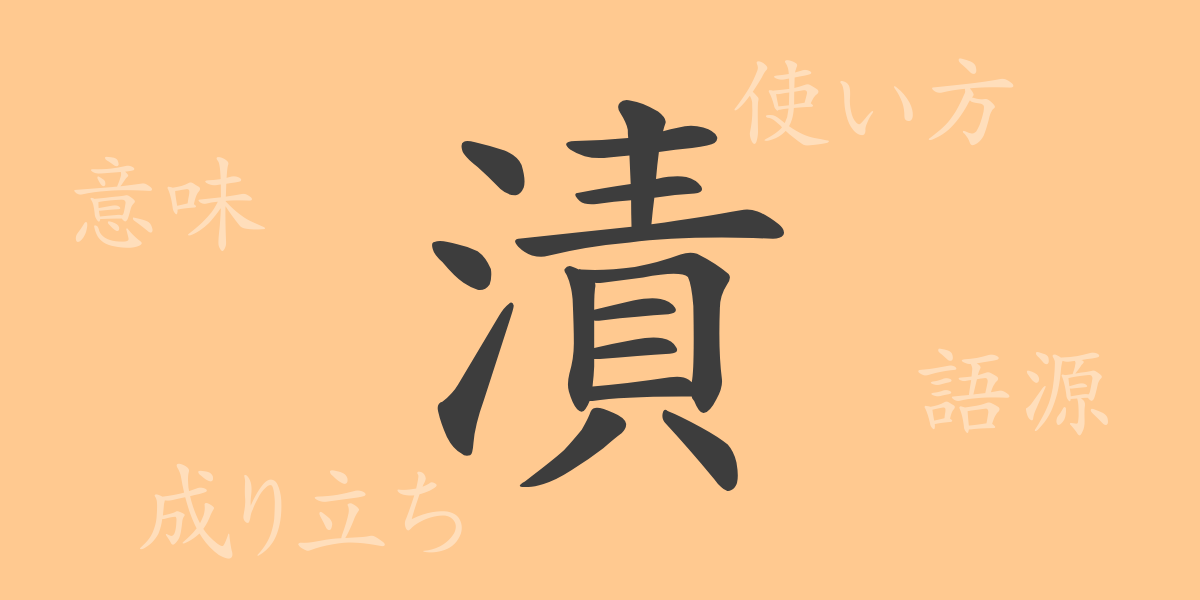The depth of Japanese culture is often expressed through its kanji, each embodying more than mere symbols but rich narratives of history, tradition, and home flavors. This article delves into ‘漬(ツケ)’, a kanji integral to Japanese daily living, exploring its origins, meanings, applications, and its presence in idioms and proverbs.
Origins of ‘漬(ツケ)’
The kanji ‘漬’ originated from ancient China, initially representing the act of submerging something in water. Composed of ‘氵(さんずい)’ denoting water and ‘責’ implying action under one’s volition, the combination signifies the act of submerging something of responsibility in water. Over time, this evolved to mean immersing foods in saltwater or soy sauce, becoming synonymous with pickling in Japanese culture.
Meaning and Usage of ‘漬(ツケ)’
Originally meaning ‘to submerge,’ ‘漬’ now primarily refers to the act of pickling foods in seasonings such as salt, soy sauce, or vinegar. This not only preserves the food but also enhances its flavors and textures. Common usages include ‘漬ける(つける)’, ‘漬け物(つけもの)’, and ‘漬け込む(つけこむ)’, indicating the process of pickling.
Pronunciation, Stroke Count, and Radical of ‘漬(ツケ)’
The kanji ‘漬’ is utilized across various contexts within the Japanese language, and understanding its pronunciation, structure, and components is crucial:
- Pronunciation: The on’yomi (Sino-Japanese reading) is ‘シ’, while the kun’yomi (native Japanese readings) are ‘つ・ける’ and ‘つ・かる’.
- Stroke Count: ‘漬’ consists of 14 strokes.
- Radical: The radical is ‘氵(さんずい)’, associated with water-related kanji.
Idioms, Phrases, and Proverbs Using ‘漬(ツケ)’ and Their Meanings
The kanji ‘漬’ appears in various idioms and phrases, reflecting unique aspects of Japanese culture:
- ‘漬物石(つけものいし)’: A weight stone used in pickling, metaphorically used to describe something or someone seemingly trivial yet indispensable.
- ‘梅が枝に漬かる(うめがえだにつかる)’: Literally ‘plums pickled while still on the branch,’ used to describe something that blends extremely well.
- ‘漬ける(つける)’: To become deeply involved in something to the point of obsession.
Conclusion on ‘漬(ツケ)’
The kanji ‘漬’ not only illustrates the act of pickling but also enriches the Japanese language and lifestyle through its varied applications. This kanji, by detailing the method of enhancing flavors through traditional pickling, transcends simple preservation to enhance culinary experiences, reflecting the profound nature of Japanese eating customs and the historical depth embedded within a single kanji.

























